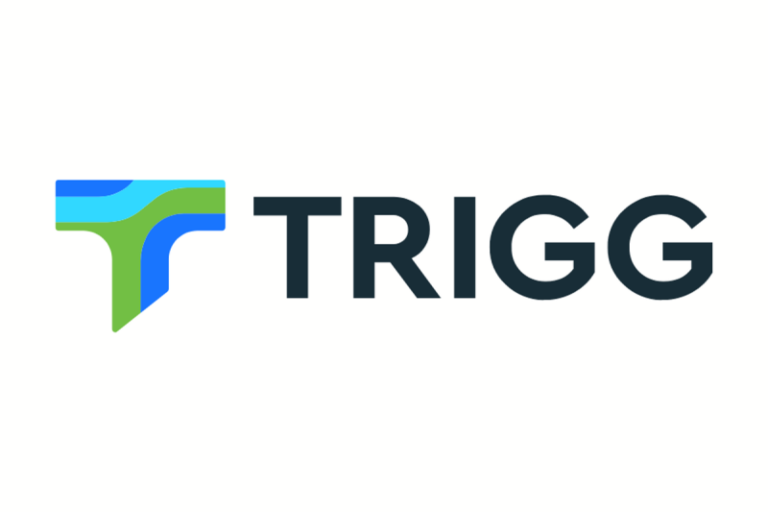Sitka Gold Corp. (TSXV: SIG) (FSE: 1RF) (OTCQB: SITKF) (‘Sitka’ or the ‘Company’) is pleased to announce analytical results for three diamond drill holes completed at the Contact Zone target located at its 100% owned, road accessible RC Gold Project (‘RC Gold’ or the ‘Project’) within the Yukon’s prolific Tombstone Gold Belt. DDRCCC-25-113 returned impressive results with up to 119.0 metres of 1.01 g/t gold returned from surface, including 10.7 m of 4.1 g/t gold and 1.2 metres of 24.8 g/t gold, confirming significant gold mineralization at the Contact Zone. Assays are currently pending for an additional three drill holes that were completed at Contact along with three holes that were completed at the adjoining Pukelman target (see Figures 2 and 3). Assays are also pending for an additional 46 diamond drill holes that have been completed across the Rhosgobel, Blackjack, Saddle, Eiger, Bear Paw and MayQu targets. Approximately 32,000 metres of diamond drilling has been completed across the RC Gold Project this year.
- Sitka’s initial drilling at Contact returns >100 gram-metre (g/t*m) gold interval from surface, confirming the presence of significant gold mineralization
- DDRCCC-25-113 intersected 119.0 metres of 1.01 g/t gold from surface, including 10.7 m of 4.1 g/t gold including 1.2 m of 24.8 g/t Au, and 1.2 m of 12.25 g/t Au
- Historical drilling at Contact has returned significant high-grade gold intercepts including hole CC10-022 which intersected 1.5 m of 147.0 g/t Au located approximately 335 m east of hole DDRCCC-25-113 (see news release dated August 19, 2025; Figures 2 and 3)
- Mineralization at Contact-Pukelman zone remains open in all directions with drilling to date confirming a mineralized footprint of approximately 900 m x 650 m (see Figure 2)
- Results for several holes are still pending, including from the adjacent Pukelman target area where numerous instances of visible gold were observed in the drill core.
To view an enhanced version of this graphic, please visit:
https://images.newsfilecorp.com/files/6144/274133_fc8a8fb4f4ed5acf_002full.jpg
‘Initial results from Sitka’s first pass of diamond drilling at the Contact zone are very encouraging, demonstrating the strong gold values present within this higher-grade gold zone,’ stated Cor Coe, CEO and Director of Sitka. ‘With an interval of over 100 gram-metres (g/t*m) from surface in Hole 113, we can add the Contact zone to our growing list of targets that demonstrate the potential to host additional multi-million ounce gold deposits within the Clear Creek Intrusive Complex. We look forward to receiving the remaining holes from this zone, along with the holes that were completed this year at the adjacent Pukelman zone, where numerous instances of visible gold were observed throughout the drill core, as we continue to delineate the potential of this exciting target area to add ounces to the growing gold resources at RC Gold.’
Figure 1: A cross section through the Contact Zone showing the intercepts of 119.0 m of 1.01 g/t Au, including 10.7 m of 4.10 g/t Au and 3.9 m of 5.51 g/t Au in DDRCCC-25-113.
To view an enhanced version of this graphic, please visit:
https://images.newsfilecorp.com/files/6144/274133_fc8a8fb4f4ed5acf_003full.jpg
Figure 2: A plan map of the Contact Zone target showing the drilling completed to date in 2025. All holes have intersected reduced intrusion-related gold system (RIRGS) style mineralization including centimetre-scale, sheeted, quartz veins within a structural corridor cutting the metasediments. Multiple occurrences of visible gold have been observed in most of the diamond drill holes completed to date (yellow stars). Assays are pending for the remaining holes. Drilling to date has traced gold mineralization across a lateral extent of approximately 900 m x 650 m and from surface to a depth of 430 m. Mineralization remains open in all directions.
To view an enhanced version of this graphic, please visit:
https://images.newsfilecorp.com/files/6144/274133_fc8a8fb4f4ed5acf_004full.jpg
Figure 3: Plan map showing the broader Contact-Pukelman target area within a large 1.0 km x 1.5 km gold-in-soil anomaly. Drilling to date has been focused on the core of this target area and has traced gold mineralization across a lateral extent of approximately 900 m x 650 m and from surface to a depth of 430 m. Mineralization remains open in all directions.
To view an enhanced version of this graphic, please visit:
https://images.newsfilecorp.com/files/6144/274133_fc8a8fb4f4ed5acf_005full.jpg
Figure 4: Examples of coarse visible gold (VG) observed in drill core at the Contact Zone. Drilling at the Contact Zone has intersected VG in all six holes completed this year, including the largest VG particles observed on the property in drill core to date (scale is the same for all pictures). Click HERE to see additional images of VG from the Contact Zone.
To view an enhanced version of this graphic, please visit:
https://images.newsfilecorp.com/files/6144/274133_fc8a8fb4f4ed5acf_006full.jpg
Figure 5: Example of large particles of visible gold seen within a quartz vein in metasedimentary rock in the drill core of DDRCCC-25-115 from 39.4 to 39.7 m length drilled at the Contact zone
To view an enhanced version of this graphic, please visit:
https://images.newsfilecorp.com/files/6144/274133_fc8a8fb4f4ed5acf_007full.jpg
Figure 6: An example of drill core from DDRCCC-25-113 showing quartz veins cutting strongly altered metasediments of the Contact Zone. The displayed section shows a well mineralized quartz vein containing 12.25 g/t Au over 1.2 m.
To view an enhanced version of this graphic, please visit:
https://images.newsfilecorp.com/files/6144/274133_fc8a8fb4f4ed5acf_008full.jpg
CONTACT-PUKELMAN TARGET
In 2025, Sitka completed six diamond drill holes totalling 2,172 metres at Contact and three diamond drill holes totalling 1,876 metres at Pukelman (see Figure 2). Drilling intersected broad intervals of strongly altered metasediments cut by several quartz monzonite, and biotite-feldspar porphyritic dykes, along with abundant, cm scale, sheeted quartz veins. Visible gold was observed in the sheeted quartz veins and was often associated with arsenopyrite, bismuthinite, and minor scheelite (see Figures 3 and 4).
Sitka’s 2025 drill program was designed to expand the mineralized footprint of the Contact zone, test the zone with oriented diamond drill core to better understand controls on the mineralization and test the linkage between the metasedimentary and intrusion hosted mineralization of the Contact and Pukelman zones. The Contact zone was previously drilled in 2010 and 2011 with 1,660 metres in 12 holes of reverse circulation drilling and 254 metres in 2 holes of diamond drilling and encountered significant mineralization in quartz veining within metasedimentary rocks up to 450 metres south of the Pukelman intrusion. Current drilling to date has traced gold mineralization across a lateral extent of approximately 900 metres x 650 metres and from surface to a depth of approximately 430 metres.
* While visible gold observations are very encouraging and confirm the presence of gold mineralization, they are not intended to imply potential gold grades. Gold assays will be published after they are received from the lab for mineralized intervals in which visible gold particles were noted.
To view an enhanced version of this graphic, please visit:
https://images.newsfilecorp.com/files/6144/274133_fc8a8fb4f4ed5acf_009full.jpg
Figure 7: A plan map of the Clear Creek Intrusive Complex (CCIC) showing the updated resource areas at Blackjack and Eiger, along with the newly discovered Rhosgoble zone and several other high-priority drill targets and multiple exploration targets. . The map highlights the numerous drill targets that Sitka has outlined within the CCIC which all are connected by the road network on the project and occur in an area measuring five (5) km north-south and twelve (12) km east-west. Additional areas highlighted by strong gold in soil anomalies are being advanced to the drill ready stage with additional geological work in 2025.
To view an enhanced version of this graphic, please visit:
https://images.newsfilecorp.com/files/6144/274133_fc8a8fb4f4ed5acf_010full.jpg
Figure 8*: A plan map of the Clear Creek Intrusive Complex (CCIC) showing the updated resource areas at Blackjack and Eiger, and the six additional areas that have drill targets indicated by the mauve hatched areas. The map highlights the numerous drill targets that Sitka has outlined within the CCIC which all are connected by the road network on the project and occur in an area measuring five (5) km north-south and twelve (12) km east-west. Additional areas highlighted by strong gold in soil anomalies are being advanced to the drill ready stage with additional geological work in 2025.
To view an enhanced version of this graphic, please visit:
https://images.newsfilecorp.com/files/6144/274133_fc8a8fb4f4ed5acf_011full.jpg
* References for Figure 7 drilling intervals:
Rhosgobel Intervals: Sitka Gold News Release dated November 25, 2024
Pukelman Intervals: Sitka Gold News Release dated January 7, 2025
Contact Intervals: O’Brien, 2010; Assessment Report, 2010 Diamond Drilling Program, Clear Creek Property (Assessment report 095539)
Shutty, 2011; Assessment Report, 2011 Exploration Program, Clear Creek Property (Assessment Report 095984)
Bear Paw Intervals: Shutty, 2011; Assessment Report, 2011 Exploration Program, Clear Creek Property (Assessment Report 095984)
Figure 9: Regional map of the RC Gold Project located in the western portion of Yukon’s prolific Tombstone Gold Belt.
To view an enhanced version of this graphic, please visit:
https://images.newsfilecorp.com/files/6144/274133_fc8a8fb4f4ed5acf_012full.jpg
Quality Assurance/Quality Control
On receipt from the drill site, the HTW/NTW-sized drill core was systematically logged for geological attributes, photographed and sampled at Sitka’s core logging facility. Sample lengths as small as 0.3 m were used to isolate features of interest, otherwise a default 2 m downhole sample length was used. Each sample is identified by a unique sample tag number which is placed in the bag containing the core to be assayed. Core was cut in half lengthwise along a predetermined line, with one-half (same half, consistently) collected for analysis and one-half stored as a record. Standard reference materials, blanks and duplicate samples were inserted by Sitka personnel at regular intervals into the sample stream. Bagged samples were placed in secure bins to ensure integrity during transport. They were delivered by Sitka personnel or a contract expeditor to ALS Laboratories’ preparatory facility in Whitehorse, Yukon, with analyses completed in North Vancouver.
ALS is accredited to ISO 17025:2005 UKAS ref. 4028 for its laboratory analysis. Samples were crushed by ALS to over 70 per cent passing below two millimetres and split using a riffle splitter. One-thousand-gram splits were pulverized to over 85 per cent passing below 75 microns. Gold determinations are by fire assay with an inductively coupled plasma mass spectroscopy (ICP-AES) finish on 50 g subsamples of the prepared pulp (ALS code: Au-ICP-22). Any sample returning over 10 g/t gold was re-analyzed by fire assay with a gravimetric finish on a 50 g subsample (ALS code: Au-GRA21). In addition, a 51-element analysis was performed on a 0.5 g subsample of the prepared pulps by an aqua regia digestion followed by an inductively coupled plasma mass spectroscopy (ICP-MS) finish (ALS code: ME-MS41).
About Sitka’s Flagship RC Gold Project
Sitka’s 100% owned RC Gold Project consists of a 431 square kilometre contiguous district-scale land package located in the heart of Yukon’s Tombstone Gold Belt. The project is located approximately 100 kilometres east of Dawson City, which has a 5,000 foot paved runway, and is accessed via a secondary gravel road from the Klondike Highway which is usable year-round and is an approximate 2 hour drive from Dawson City. It is the largest consolidated land package strategically positioned mid-way between the Eagle Gold Mine and the past producing Brewery Creek Gold Mine.
The RC Gold Project now has pit-constrained mineral resources that are contained in two zones: the Blackjack and Eiger gold deposits with 1,291,000 ounces of gold in 39,962,000 tonnes grading 1.01 g/t gold in an indicated category and 1,044,000 ounces of gold in 34,603,000 tonnes grading 0.94 g/t in an inferred category at Blackjack and 440,000 ounces of gold in 27,362,000 tonnes grading 0.50 g/t gold in an inferred category at Eiger. These resource estimate numbers are supported by the recently updated technical report for RC Gold, prepared in accordance with NI 43-101 standards, entitled ‘Clear Creek Property, RC Gold Project NI 43-101 Technical Report Dawson Mining District, Yukon Territory’, prepared by Ronald G. Simpson, P. Geo., of GeoSim Services Inc. with an effective date of January 21, 2025. This report is available on SEDAR+ (http://www.sedarplus.ca) and on the Company’s website (www.sitkagoldcorp.com).
Both of these deposits begin at surface, are potentially open pit minable and Initial bottle roll metallurgical testing confirmed the non-refractory characteristics of the gold mineralization and returned gold extraction rates averaging around 85%. Further metallurgical testwork in 2024 returned recoveries ranging from 77.6 to 93% for gravity followed by cyanidation.
For the purposes of the current resource model, it is assumed that a likely mill flowsheet would consist of a gravimetric, flotation, and cyanidation circuit.
The company has now completed 165 diamond drill holes for a total of 59,770 metres across the Clear Creek Intrusive Complex (CCIC), and an additional 3 holes for 858 metres in the May-Qu Intrusion. Drilling continues to outline higher grade mineralization at all zones including hole DDRCCC-24-068 at Blackjack which intersected 678.1 metres of 1.04 g/t gold starting from surface (see news release dated October 21, 2024), and hole DDRCCC-25-075 which intersected 352.8 metres of 1.55 g/t gold including 108.9 metres of 3.27 g/t gold and 45.0 metres of 4.52 g/t gold (see news release dated April 22, 2025). Drilling in 2024/2025 has resulted in the discovery of a new higher grade zone at Rhosggobel including hole DDRCRG-25-010 at Rhosgobel which intersected 235.9 metres of 1.11 g/t gold, including 40.0 m of 2.01 g/t gold and 10.0 m of 5.29 g/t gold, from surface (see news release dated September 18, 2025).
RC Gold Deposit Model
Exploration on the Property has mainly focused on identifying an intrusion-related gold system (‘IRGS’). The property is within the Tombstone Gold Belt which is the prominent host to IRGS deposits within the Tintina Gold Province in Yukon and Alaska. Notable deposits from the belt include: Fort Knox Mine in Alaska with current Proven and Probable Reserves of 230 million tonnes at 0.3 g/t Au (2.471 million ounces; Sims 2018)(1); Eagle Gold Mine with current Measured and Indicated Resources of 233 million tonnes at a grade of 0.57 g/t Au at the Eagle Main Zone (4.303 million ounces; Harvey et al, 2022)(2); the Brewery Creek deposit with current Indicated Mineral Resource of 22.2 million tonnes at a gold grade of 1.11 g/t (0.789 million ounces; Hulse et al. 2020)(3); the AurMac Project with an Indicated Mineral Resource of 112.5 million tonnes grading 0.63 gram per tonne gold (2.274 million ounces)(4) plus an Inferred resource of 280.6 million tonnes grading 0.60 g/t gold (5.454 million ounces)(4), the Valley Deposit, with a current Measured and Indicated Mineral Resource of 7.94 million oz gold at 1.21 g/t and an additional Inferred Mineral Resource of 0.89 million oz at 0.62 g/t gold(5), and the Raven deposit with an inferred mineral resource of 1.1 million oz (19.96 million tonnes at 1.67 g/t gold)(6). The QP has been unable to verify the information regarding the above resource estimations and the information is not necessarily indicative of the mineralization on the property that is the subject of the disclosure.
Source










